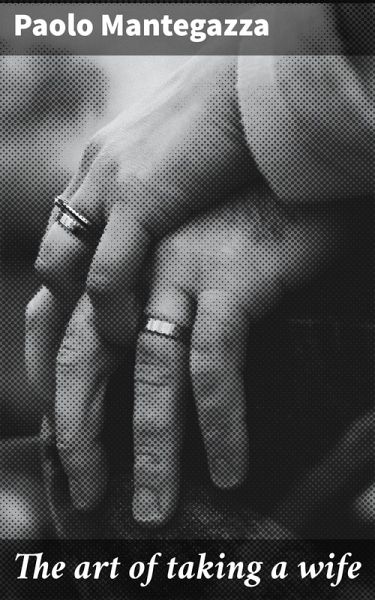
The art of taking a wife (eBook, ePUB)
Exploring the intricacies of love, marriage, and companionship in the 19th century
Versandkostenfrei!
Sofort per Download lieferbar
0,49 €
inkl. MwSt.
Weitere Ausgaben:

PAYBACK Punkte
0 °P sammeln!
In "The Art of Taking a Wife," Paolo Mantegazza presents a compelling exploration of love, marriage, and the intricate dance of human relationships during the 19th century. Through a blend of narrative storytelling and philosophical musings, Mantegazza delves into the societal expectations surrounding marriage, offering a critique of contemporary norms. The book is rich in evocative language and detailed character studies, embodying the literary style of romantic realism that characterizes Mantegazza'Äôs oeuvre. His keen observations of human behavior and emotions provide a nuanced understan...
In "The Art of Taking a Wife," Paolo Mantegazza presents a compelling exploration of love, marriage, and the intricate dance of human relationships during the 19th century. Through a blend of narrative storytelling and philosophical musings, Mantegazza delves into the societal expectations surrounding marriage, offering a critique of contemporary norms. The book is rich in evocative language and detailed character studies, embodying the literary style of romantic realism that characterizes Mantegazza'Äôs oeuvre. His keen observations of human behavior and emotions provide a nuanced understanding of marital dynamics, set against the backdrop of a rapidly changing Italian society. Mantegazza, a prominent Italian physician and writer, was influenced by his extensive travel and the diverse cultures he encountered. His background in the sciences, particularly in physiology, allows him to approach the subject of marriage with a unique lens, examining not just the emotional aspects but the biological underpinnings of attraction and bonding. This multidimensional perspective is indicative of Mantegazza's commitment to blending art and science, aiming to elevate the discourse around personal relationships. For readers interested in the intersections of love, culture, and societal norms, "The Art of Taking a Wife" is a profound and enlightening read. It invites reflection on the institution of marriage, encouraging readers to ponder their own experiences and societal influences. Mantegazza's work transcends time, making it a significant addition to the canon of romantic literature.
Dieser Download kann aus rechtlichen Gründen nur mit Rechnungsadresse in A, B, BG, CY, CZ, D, DK, EW, E, FIN, F, GR, H, IRL, I, LT, L, LR, M, NL, PL, P, R, S, SLO, SK ausgeliefert werden.













